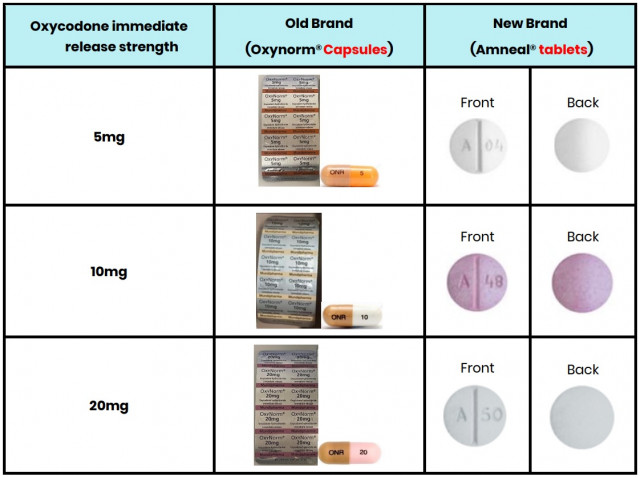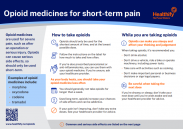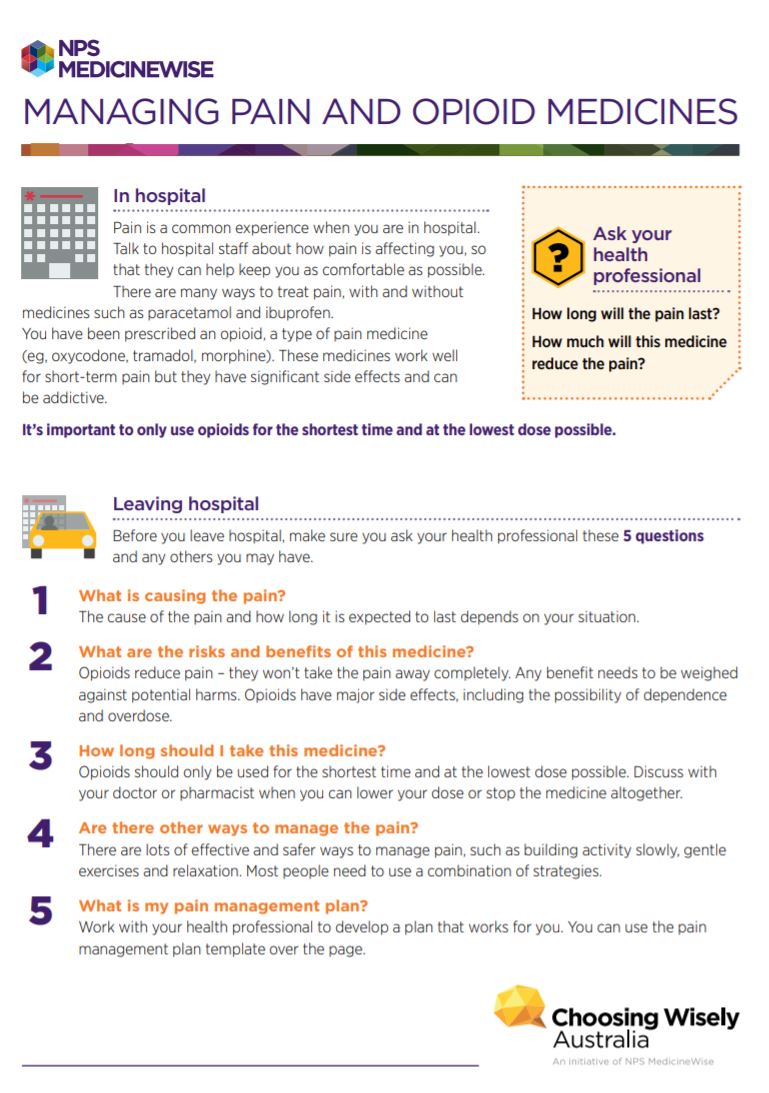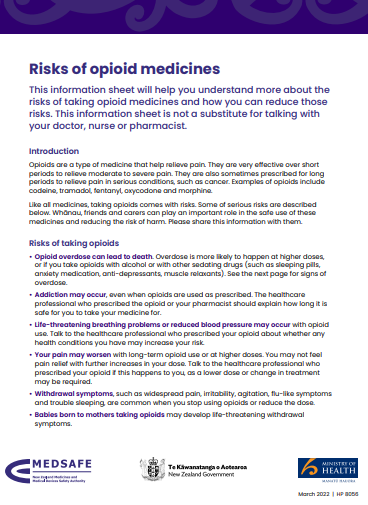Oxycodone is used for the relief of moderate to severe pain experienced after an injury or operation, or pain caused by a terminal illness such as cancer. It's usually used when milder pain medicines such as paracetamol or non-steroidal anti-inflammatories (NSAIDs) don’t work well enough.
- Oxycodone belongs to a group of medicines called opioids. They act on your brain and nervous system to reduce pain.
- Other types of pain relievers such as paracetamol and NSAIDs (ibuprofen, diclofenac, naproxen) may also be used with oxycodone.
- Read more about pain, pain-relief medication and opioids.
Some types of oxycodone are immediate release (or short-acting) and others are controlled release (or long-acting)
- Immediate release: These start working quickly to ease pain and are usually taken every 4 to 6 hours..
- Controlled release: These work slowly over several hours to give a constant and more even pain control. They are usually taken twice daily (12 hours apart) or once daily, at about the same time each day.
- Follow the instructions on the label of your medicine, for how much to take and how often.
August 2024: Oxycodone immediate release is changing from OxyNorm capsules to Oxycodone Amneal tabletsThe supplier of the OxyNorm capsules is leaving the New Zealand market. The new brand is Oxycodone Amneal immediate release tablets, available as 5 mg, 10 mg and 20 mg tablets. Oxycodone Amneal tablets have the same active ingredient as OxyNorm oxycodone capsules and should work in the same way.  Note:
Find out more about Oxycodone immediate release tablets: Amneal is the new brand(external link). |









